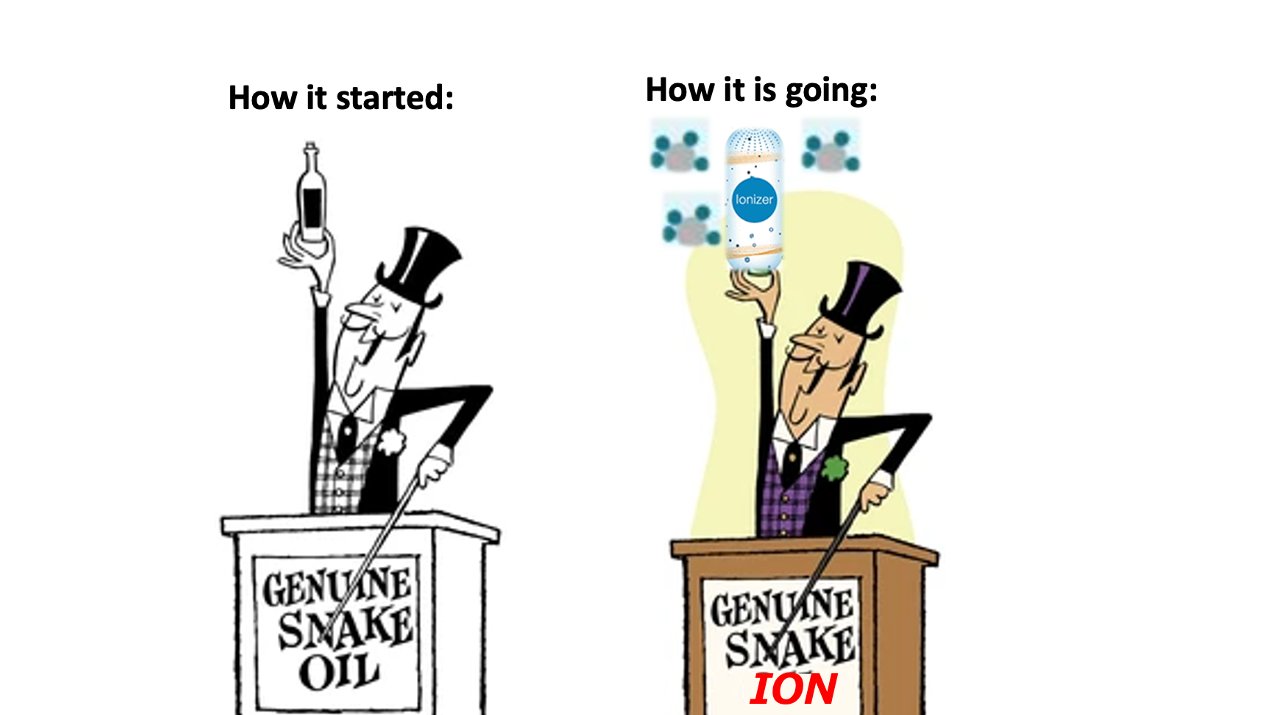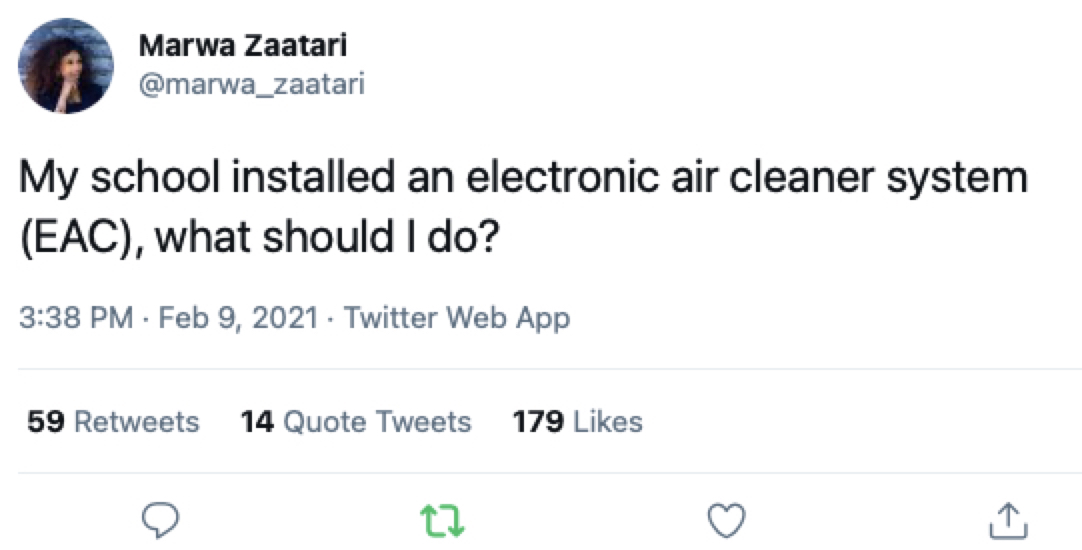Stick to Proven Technologies for Air Cleaning in Schools: The case of ionization technologies
We’ve been getting a lot of inquiries from school leaders, parents and others about how to clean the air inside schools. As we’ve written about, too many schools have stale and stagnant indoor air, which as we all now know is a recipe for COVID-19 spread.

ASHRAE and others have very clear and solid guidance for cleaning indoor air – from sophisticated mechanical solutions to simple inexpensive ways to improve natural ventilation. This visualization of ventilation patterns in a classroom, created by the New York Times, is really helpful in understanding how air moves inside classrooms with students and teachers present.
We implore school leaders to follow these recommendations, particularly ASHRAE’s – they are a leader in the field and base their recommendations on rigorous research. Much of that research comes from decades of work, but others come from brand new research in response to COVID-19.
The key for school leaders is to STICK TO PROVEN TECHNOLOGIES. Do not waste your school district’s precious and limited resources on unproven technologies.
Ionization technology in one such technology. Despite claims made by some companies, the peer-reviewed research on their effectiveness finds little evidence that they clean much air (especially in real world settings). The California Department of Public Health’s September 2020 paper, THE ROLE OF BUILDING VENTILATION AND FILTRATION IN REDUCING RISK OF AIRBORNE VIRAL TRANSMISSION IN SCHOOLS, ILLUSTRATED WITH SARS-COV-2, states specfiically, “Do not use air cleaning devices that generate harmful pollutants (i.e., ionization devices or ozone generators), or devices of unproven effectiveness” (page 3).
A colleague from a national organization working with school districts from across the country emailed us saying:
“I have heard of LEAs considering purchasing ionization air cleaners, among a whole host of other options to improve facilities (all anecdotal)… I think a lot of vendors are looking at these federal funds as an opportunity to market their products and solutions to districts to address COVID-19 and safely reopen schools. Our members are being inundated with a lot of proposals from companies.”
But perhaps more importantly, there is evidence that introducing ions into the air can be harmful to people.
This Mother Jones interview with Delphine Farmer, an atmospheric chemist at Colorado State University who is currently studying bipolar ionization, is really useful. Are Schools’ Fancy New Air-Scrubbing Devices Really Effective—and Safe? A scientist airs her concerns about the surge of products that supposedly kill airborne viruses.
This Twitter thread on electronic air cleaning systems (including ionization) by Marwa Zaatari, member of the ASHRAE Epidemic Task Force, is especially informative.
Bottom line: the evidence of the benefits and/or harms of ionization technology to clean indoor air is very mixed as of now. Scientists strongly recommend sticking to proven technologies. See below:

Lastly, here are three brand new peer-reviewed studies on ionization technology. All three find that evidence that ionization devices, negative or bipolar, are “playing chemistry with the indoor air” and may result in significant adverse health effects.
A far wiser bet is to avoid “additive” technologies until there is an independent body of research supporting their safety and efficacy. Instead, stick to proven air cleaning technologies for now – we know they work: add air cleaning filters (e.g., ASHRAE MERV 13 rated or higher) and using AHAM CADR rated portable air cleaners.

